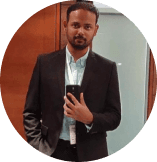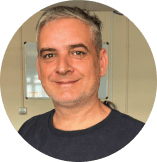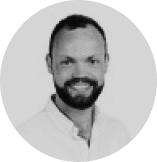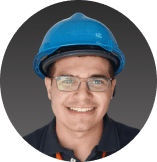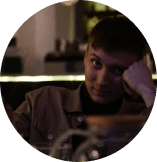Welcome to OnestopNDT, Mr. Mukhopadhyay! We’re thrilled to have you here today. Let’s kick things off—can you share a bit about your journey? What first sparked your interest in metallurgical and materials engineering, and how has that passion evolved over the years?
Materials play a significant role in human civilization. The three ages in the history of mankind are known as the Stone Age, the Bronze Age, and the Iron Age, highlighting the importance of materials. In our day-to-day usage as well as in different spheres of our life, such as transportation, power, textile, agriculture, communication, medical, etc., materials are inevitable. My interest in materials was when I became conversant with the versatile uses of materials in our lives and how they can be mitigated to various needs. I became interested in metallurgical engineering to know more details about various materials and how they can be engineered to tailor different applications. After a very brief career in industry, I entered into the fascinating field of R&D of materials related to nuclear applications. I became familiar with different characterizing techniques and testing techniques essential for understanding the behaviour of materials. I became familiar with several NDT techniques. Eventually, I earned a doctoral degree in Metallurgical Engineering which further sparked my interest in the R&D of materials. I continued working in the R&D field of materials and NDT and started putting my contribution in different areas encompassing the mechanical behaviour of materials, defect detection, manufacturing processes, structural integrity monitoring, condition monitoring applications, etc.
You’ve had an incredible career spanning institutions like IGCAR and HBNI. What’s a project or challenge you tackled that still stands out to you as particularly significant or transformative? How did you approach overcoming the hurdles it posed?
In IGCAR and HBNI, I had many challenging situations at work. One such was the development of a novel methodology based on ultrasonic and acoustic emission techniques for structural integrity monitoring applications. The integrity of piping systems is essential for the safe and reliable operation of nuclear power plants because the pressurized piping may encounter ratcheting resulting in reduced fatigue life or failure once subjected to seismic or other cyclic loading. In a challenging work, acoustic emission based source location methodology and ultrasonic methodology for early detection of crack initiation and monitoring crack growth during ratcheting of stainless steel pipes were successfully developed. Proper planning of the work schedule; periodical calibration and checking of sensors and cables; effective correlation of signals to the material response, etc. were instrumental in combating the challenges of isolating the signals from noise and identifying the appearance of cracks, in this work.
The ‘National NDT Award’—twice! That’s an incredible achievement. Could you share what those contributions entailed and what made them so groundbreaking?
I received the ‘National NDT Award’ in the R&D category because of my contribution to research and technological capabilities in the field of development and innovation in different fields of non-destructive evaluation by conducting systematic investigations to gain better insight into damage and defects in materials and also by applying this knowledge successfully for industrial applications including nuclear, space and petrochemical industries. A few examples of work include the development of a wireless NDT system; NDT methodologies for structural integrity monitoring applications; defect detection in materials; the study of deformation, fatigue, crack growth, and fracture mechanics behaviour in materials; NDT for monitoring manufacturing processes; condition monitoring of industrial components, etc. These works were marked as developmental activities of high quality that helped enhanced the applications of NDT systems and sensors from laboratory to industry.
Structural integrity assessments and NDT are critical to engineering. Where do you see the next big innovation coming from in these fields?
Structural integrity assessment is the ability of a component or structure to withstand its intended load without having major damage or failure. For maintaining the safety and reliability of components/structures throughout their life, assessment of structural integrity is indispensable. The development of technologies, sensors, and instrumentation in the coming years will enhance the capabilities of NDT methods for the structural integrity assessment of components. Automation in NDT is very essential for inspection at harsh environments and inaccessible areas and for reducing inspection time. The use of automation and robotic tools will be a big leap in structural integrity assessment and NDT works. Additionally, development in artificial intelligence and machine learning methods will also play a big role in NDT in the coming years.
As a professor and mentor, you’ve guided countless students. What’s the secret to juggling the demands of teaching, mentoring, and advancing research simultaneously?
Teaching is not a mere profession; it is an art where the brilliance of the students is polished and the future of the world is carved out. Teaching is only complete when it consists of both theory and Lab classes. I always made it a point that theory classes are complemented with lab sessions whenever possible. Research work is the advancement of knowledge collected over time which requires a theoretical and practical background of any subject. I used to take responsibility and devote time properly to balance teaching, mentoring, and research work so that my contribution does not fall short of the progress in these spheres.
Reflecting on your career, is there a particular moment with a student or mentee that left a lasting impression on you?
I had many colleagues and students with whom I shared many responsibilities. I remember a few moments of effective exchange of ideas and knowledge with my students for bringing progress in their projects, particularly for the projects encompassing multiple areas such as material science, NDT, and instrumentation. The narratives were very helpful for the progress of their works and some of them received the best paper award at conferences. This gave me a sense of pride, pleasure, and satisfaction.
Your research covers fascinating techniques like acoustic emission and infrared thermography. Which area of study has been the most fulfilling for you, and why does it hold such a special place?
From the beginning of my career, I used to work in acoustic emission and infrared thermography. As compared to other NDT techniques, these two techniques can be used to gather information online. I used these techniques for research purposes involving the study of deformation, fatigue, fracture, and crack growth in different materials, as well as for monitoring manufacturing processes, welding, machining, integrity monitoring of components and structures, etc. The application of these techniques for monitoring manufacturing processes and structural integrity monitoring of components has been the most fulfilling for me. The online monitoring capability of these two techniques makes them suitable for employment in industry and the quality of a process can be checked to ensure the acceptability of a product. Monitoring the structural integrity enables deciding the emergence of defects and the quality and integrity of the component in real-time, which is difficult with other NDT techniques. The online detection of quality also eases the deployment of other techniques for further investigation.
Advanced manufacturing is reshaping many industries. How do you envision technologies like 3D printing influencing the future of NDT?
Advanced manufacturing is mostly known as additive manufacturing (AM) which is a transformational technology for the fabrication of complex shapes directly from 3D models, that require minimal post-fabrication finishing steps. The AM techniques are being increasingly applied in manufacturing and R&D efforts towards inspection and quality control of additively manufactured products are also growing. 3D printing is an advanced manufacturing process that creates objects from its digital design. This is accomplished through layer-by-layer deposition of material in the form of liquid or powder and then by fusion of the layers together. Through 3D printing, it can be expected that infrastructures such as dams, tunnel linings, bridges, etc. could be fabricated in the future. The 3D printing process can be also designed to make intricate and customized features. These improvements in 3D printing technology will invoke newer challenges to NDT concerning improving sensitivity and enhancement in the defect detection capability of various NDT techniques.
You’ve held leadership roles in various prestigious organizations. How would you describe your leadership philosophy, and what’s your approach to fostering growth and innovation in your teams?
My leadership philosophy was based on certain key elements such as the transformation of ideas into practice, proper planning of the work & implementation, and interaction with other colleagues and juniors. In my opinion, the endeavor in teamwork should be based on proper communication and interrelation among different team members which can keep the team spirit upright, and to fostering growth and innovation. The measures taken by different people in a team need to be respected and discussed to find a solution to a problem and to apprehend the initiatives taken by different members.
Collaboration has been central to your work, with partnerships ranging from IIT Madras to CEA France. How do you bridge cultural and disciplinary gaps to create effective international collaborations?
Several factors that can contribute to fruitful collaboration between two teams are defining the objectives of collaboration clearly, support from the management, understanding each other’s work properly, proper communication, and following the work progress regularly. By sharing the responsibility and knowledge among the team members, gaps in the work, if any, can be filled. This enhances the performance of each member and removes any logistic barrier coming into the work. The exchange of workforce between the two collaborating teams and the visit of team members periodically ought to strengthen the bond between the two teams and also help to know the members of each team culturally and socially, for further improvement of the work atmosphere and cooperation.
With such an illustrious career, what drives you to continue pushing boundaries and contributing to science and engineering?
The desire to pursue work further is the key. The idea of working with learned people across the globe offers great benefits to the future of science and engineering and is of special interest to me. Breakthroughs in science don’t just happen. It is made by tireless efforts of people to push the boundaries of science. My idea of working also is to put my contribution to pushing the boundaries of science.
Everyone needs a way to recharge. How do you unwind or maintain a sense of balance amidst the demands of your professional life?
The desire to work further is the key to my driving. Be it a work on research and development type, or teaching and mentoring students, my attention and consciousness remain the same. Working based on priority and importance are the two main criteria that decide my time sharing and contribution to different works.
Looking back on your journey, what are the most valuable life lessons you’ve learned from research, teaching, and leadership?
As we grow up in our careers, the ability to work in many fields at a time is very much sought after. Thus, managing different aspects of research works efficiently is very important. In teaching an amalgamation between the theory and lab makes the subject very interesting and motivates the students so that their problem-solving capabilities increase. A few components of able leadership include the knowledge of theory, attitude towards subordinates, ability to guide, and behaviour. The most valuable life lessons I have learned are that we need self-confidence, self-discipline, patience, and humbleness to motivate others; build our network in research and collaboration; and get associated with right-minded people.
For aspiring researchers aiming to make a mark in NDT and material sciences, what advice would you offer to help them navigate the path to success?
As the world continues to undergo rapid urbanization with an increasing human impact on the earth, a deeper understanding of natural resources is required. The technological advances in all spheres including materials are central to addressing the needs of energy, environment, and sustainability. In line with this, advances in materials science and NDT ought to happen. For a good career in NDT and material science, and to cope with the progress in these fields, knowledge of advanced topics like artificial intelligence, machine learning, automation, and robotics are essential. Many different types of materials including metallic, composite, and ceramic are used in different applications. Knowledge in different areas of material sciences will help aspiring researchers to progress in their fields. Qualification and certification in NDT techniques are also recommended for a successful career in NDT.
Let’s zoom out a bit. What do you see as the major challenges currently facing the NDT sector? How can we, as an industry, tackle these obstacles to ensure continued growth and innovation?
Industrial advancement in different sectors such as aerospace, nuclear, chemical, petrochemical, marine, civil, etc. demands advanced materials and manufacturing processes, better characterizing techniques, better flaw detection capability, and improved quality control, among others. The major challenges in NDT are thus improving the accuracy and sensitivity of different techniques, bringing quantitative NDT, developing embedded sensors, and improving instrumentation and sensing methods. Thus, keeping oneself updated about various developments in technologies and effectively applying them is essential. Codes and regulations are also being updated. The NDT community must be updated with these changes also.
Finally, bringing it back to OnestopNDT! How do you see our platform impacting the NDT community? Are there ways we can expand our efforts to help professionals connect, learn, and thrive even more effectively?
OnestopNDT impacts the NDT community by bringing various expertise in NDT and materials under one umbrella where various issues and responses are discussed by experienced professionals. The professionals in these areas are also available on other platforms like Linkedin. I believe that professionals are keen to join such platforms that can bring fruitful discussion and collaboration. Thus, drawing more professionals from different fields of materials and the NDT community and encouraging them to participate in more knowledge-sharing events, discussions, and collaboration could be the means to expand the efforts of OnestopNDT.
.png)




